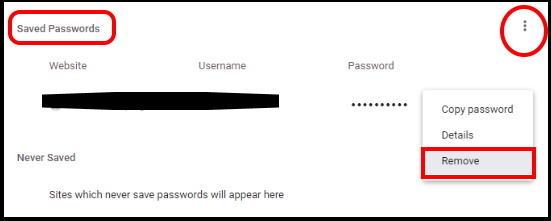

- HOW TO FIND SAVED PASSWORDS ON MAC GOOGLE CHROME HOW TO
- HOW TO FIND SAVED PASSWORDS ON MAC GOOGLE CHROME UPDATE
- HOW TO FIND SAVED PASSWORDS ON MAC GOOGLE CHROME REGISTRATION
- HOW TO FIND SAVED PASSWORDS ON MAC GOOGLE CHROME PASSWORD
- HOW TO FIND SAVED PASSWORDS ON MAC GOOGLE CHROME WINDOWS

HOW TO FIND SAVED PASSWORDS ON MAC GOOGLE CHROME UPDATE
If you found that your passwords are compromised with Chrome Safety Check feature or you want to update them on bulk then it’s a good idea you download or export all passwords in Excel or CSV format.
HOW TO FIND SAVED PASSWORDS ON MAC GOOGLE CHROME WINDOWS
HOW TO FIND SAVED PASSWORDS ON MAC GOOGLE CHROME HOW TO
However, many users asked us how to bulk download all the passwords and upload back again. In our earlier article, we have explained how to view and delete the saved passwords in Chrome browser.
HOW TO FIND SAVED PASSWORDS ON MAC GOOGLE CHROME REGISTRATION
Once saved, Chrome will autofill the passwords on login and registration forms whenever you open the website.

HOW TO FIND SAVED PASSWORDS ON MAC GOOGLE CHROME PASSWORD
Under “Keychains” in the top left corner, select iCloud and you should be able to see all the passwords and login information you just imported.Īs they are now synced to iCloud, you should also be able to use iCloud Keychain on your iPhone or iPad to log into websites or apps, or if you have a Windows computer, you can use the Chrome extension to access your passwords as well.Chrome offers built-in password manager tool to save your passwords when you login to websites. You can check to see if the passwords are successfully imported by pressing Command + Space and typing “Keychain Access”. Once imported, the passwords should now be synced with iCloud Keychain.Choose either Chrome or Firefox, depending on which browser you saved the passwords to.Now that you’ve completed the other steps, the final process is importing those passwords saved in Firefox or Chrome into Safari, which thankfully is a lot more straightforward. Search for “.enabled” and toggle it to “true”.Type about:config in the address bar and hit Enter.If you do not find the option to Import from a File, the feature might be disabled for you. Choose the CSV file you previously saved.Under the Saved Passwords section, click the three dot icon and select Import.After Chrome is relaunched, click the three dot menu icon.Search for “password import” and click the drop-down menu and select “Enabled”.Type chrome://flags in the address bar and hit Enter.Now that the passwords have been exported from your password manager, the next step is to import them into Chrome or Firefox. Step 2 – Import The Passwords To Chrome Or Firefox Choose the file name, location, and make sure the file format is CSV.Launch the 1Password app on your computer.Go to Account Options > Advanced > Export.Click Export to CSV which will then download a CSV file to your computer.Go to My Account and select Export Data (you might be prompted for your master password).If you’re using a password manager, then proceed with the steps below based on the password manager that you’re using. If you stored your passwords inside of Chrome or Firefox, you can skip ahead to step 3. The process is a bit convoluted as you will first need to import the passwords into a browser like Chrome or Firefox, and then import it over to Safari, but without further ado, here are the steps. But what if you’re already using a different password manager? If you’re using a different password manager but would like to give Apple’s iCloud Keychain a try, you’ll find that importing your passwords is actually not too difficult, but the only requirement is that you own a Mac computer.


 0 kommentar(er)
0 kommentar(er)
